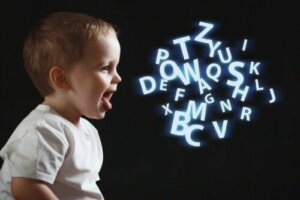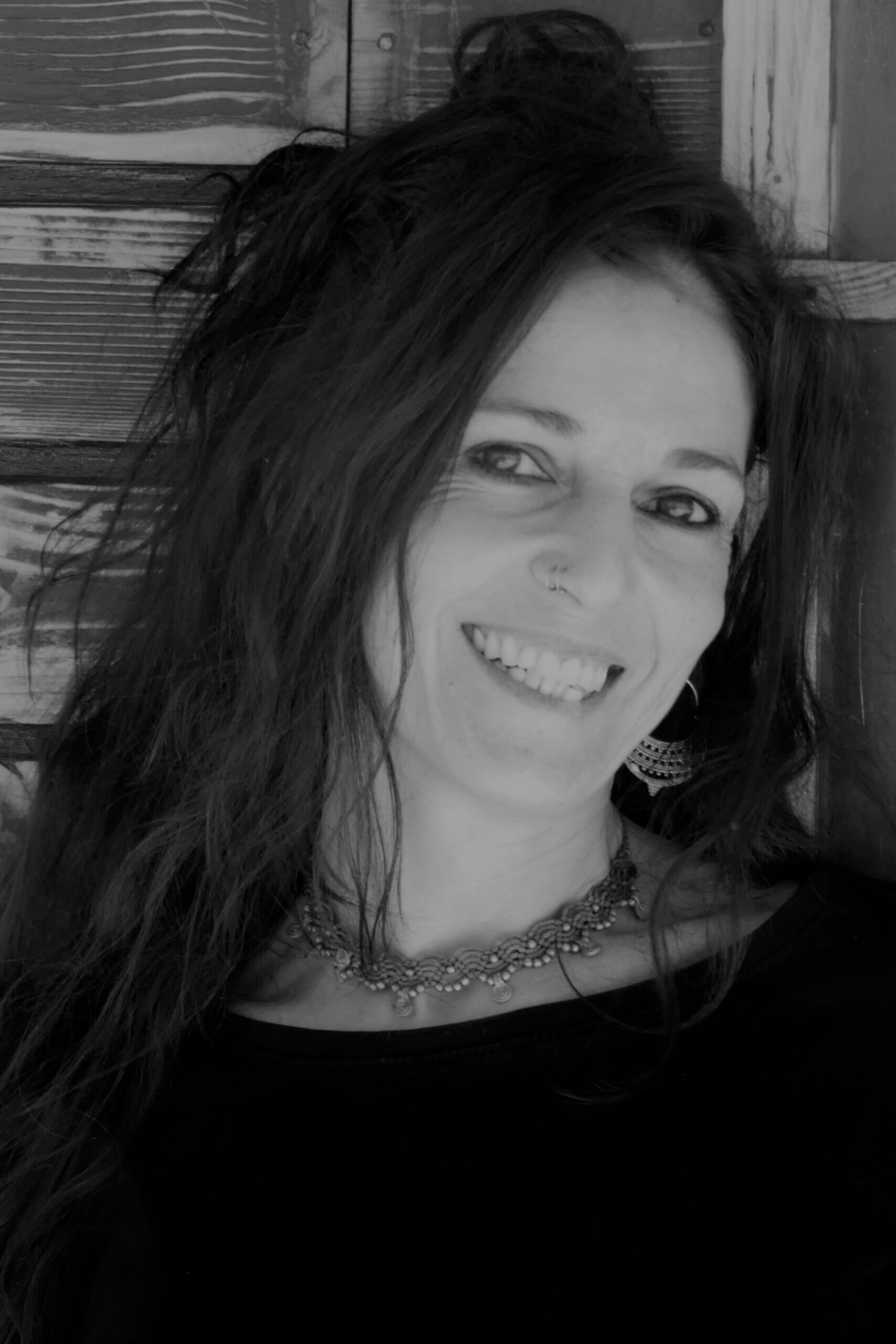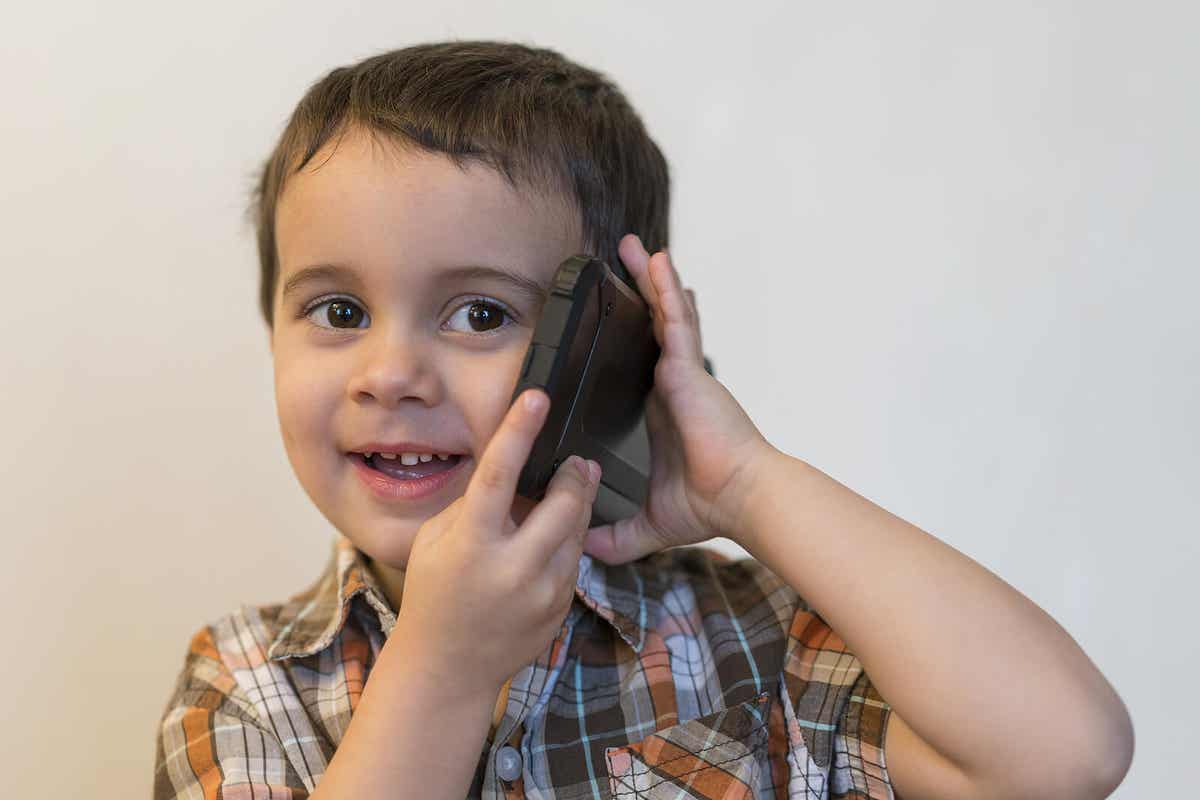What 3-Year-Olds Understand When We Talk


Written and verified by the pedagogue Marta Crespo Garcia
By three years of age, children have about 900 words or more in their expressive vocabulary. You can see that they’re already able to match three or four words in a sentence. Well, with this great repertoire in their vocabulary, what do three-year-olds understand when we speak to them?
We know that understanding comes before expression. So, it’s estimated that three-year-olds can understand twice their expressive vocabulary. At three years old, even though they might get tongue-tied and be hard for us to interpret, they can understand more than some adults think.
Language development from birth to three years
We must clarify that language development isn’t the same for all children of the same age, ie, there are variations. These have to do with individual and environmental factors, which can change the rate of language acquisition and development at different stages. Of course, they’re always within reasonable ranges.
The stages kids go through from birth until acquiring the basic language learning structures are the following:

- Prelinguistic age (0-12 months). At the end of the first year, kids will say their first words; “Mama” and “Dada.” In terms of understanding, they hear their name and are able to understand simple commands, like “give me” and “take.”
- Linguistic stage (12-18 months). At this stage, they begin a complex process of language development. They can vocalize about 20 words and combine two together. “Mama give”, “Dada come”, etc. Their understanding is growing and, if asked, they carry objects from one place to another.
- Telegraphic language (18 months-3 years). At two years old, they can pronounce about 250 words. Here, they start to understand questions and more and more simple instructions.
- Complex sentences (3-6 years). At three years old, kids already manage about 900 words, and at six, about 2500 words. At six years, they have already acquired the basic language learning structures.
Comprehensive language at three years old
From the age of three, kids start participating and interacting in new contexts, like school or other recreational activities. As a result, they can produce more and therefore comprehend more.
From three to four years, the child’s understanding and expressive language will improve a lot. During this year, they’ll learn more vocabulary. Kids go from using about 900 words to about 1200.
Obviously, these numbers are approximate. As we’ve said before, not all kids develop at the same rate. Now, the evolution and acquisition in the development of oral and comprehensive language depend on two factors, which are individual and environmental.
- Individual factors. These refer to physical and psychological maturation. If the child suffers from a delay in maturation or a neurological problem, this will affect their language development and comprehension. Therefore, it will be slower.
- Environmental factors. These have to do with the context and the environment the child operates in. For example, this could be the arrival of a sibling or a lack of stimuli, attention, and affection will have a negative impact on the child’s communication, linguistic, and cognitive development.
Therefore, the family plays a fundamental role in the development of oral and comprehensive language in the child’s early years.
Offering our little one communicative situations is essential. Through conversations during games, walks, reading, daily tasks, etc., we’ll be helping them learn visual, auditory, tactile, motor, cognitive, and social skills. These are all important for language development.
What do three-year-olds understand when we speak to them?
As we said before, from three to four years, a child’s understanding and expressive language will advance greatly. At this age, kids can understand much more than they can express. So, three-year-olds can:
- Answer if you call them
- Understand questions and answer them
- Understand and carry out orders
- Identify some colors and the names of some shapes, like circles and squares
- Know who we mean when we talk about family members: Brother, grandma, aunt, cousins
- Begin to understand simple time-space relationships, such as morning and night
- Master and understand common generic words (dog, cat, house, car, apple) but not the most general categories
- Begin to understand abstract concepts such as pretty, ugly, far, near
- Follow the narration of a story without needing pictures

How to talk to kids to promote their development of oral and comprehensive language
- Always speak slowly and clearly if you want them to understand you and learn to vocalize.
- Although it may seem insignificant, it’s important to talk to your child while facing them and at their height. This will make them more inclined to listen to you and, therefore, understand you.
- Use familiar vocabulary with familiar words referring to objects and people in their daily environment.
- It’s essential that you talk and have conversations with the child whenever you can. In particular, it’s beneficial to talk to your little one about daily tasks, describe places when walking, read stories, etc.
- Likewise, you need to give them the opportunity to express themselves, even if you don’t understand what they’re trying to say very well.
- If your child makes a mistake or says a word wrong, correct them by repeating the word correctly in a natural way. This way, they won’t be frustrated or embarrassed by the way they speak.
Final thoughts on talking to three-year-olds
Both oral language and comprehensive language are naturally learned functions and skills. However, interaction with the social environment is essential, especially with the family, since children learn to speak and understand in their family environment. Later, their language and understanding will grow in other contexts like school or other recreational activities.
It’s essential to offer three-year-olds quality communicative interactions where they can express themselves and communicate. It doesn’t matter if they don’t understand everything we say, it’s still important to talk to them and have conversations with them. This communicative act helps both their expressive and comprehensive language. Likewise, we need to give them the chance to express themselves, even if we don’t understand what they’re saying.
By three years of age, children have about 900 words or more in their expressive vocabulary. You can see that they’re already able to match three or four words in a sentence. Well, with this great repertoire in their vocabulary, what do three-year-olds understand when we speak to them?
We know that understanding comes before expression. So, it’s estimated that three-year-olds can understand twice their expressive vocabulary. At three years old, even though they might get tongue-tied and be hard for us to interpret, they can understand more than some adults think.
Language development from birth to three years
We must clarify that language development isn’t the same for all children of the same age, ie, there are variations. These have to do with individual and environmental factors, which can change the rate of language acquisition and development at different stages. Of course, they’re always within reasonable ranges.
The stages kids go through from birth until acquiring the basic language learning structures are the following:

- Prelinguistic age (0-12 months). At the end of the first year, kids will say their first words; “Mama” and “Dada.” In terms of understanding, they hear their name and are able to understand simple commands, like “give me” and “take.”
- Linguistic stage (12-18 months). At this stage, they begin a complex process of language development. They can vocalize about 20 words and combine two together. “Mama give”, “Dada come”, etc. Their understanding is growing and, if asked, they carry objects from one place to another.
- Telegraphic language (18 months-3 years). At two years old, they can pronounce about 250 words. Here, they start to understand questions and more and more simple instructions.
- Complex sentences (3-6 years). At three years old, kids already manage about 900 words, and at six, about 2500 words. At six years, they have already acquired the basic language learning structures.
Comprehensive language at three years old
From the age of three, kids start participating and interacting in new contexts, like school or other recreational activities. As a result, they can produce more and therefore comprehend more.
From three to four years, the child’s understanding and expressive language will improve a lot. During this year, they’ll learn more vocabulary. Kids go from using about 900 words to about 1200.
Obviously, these numbers are approximate. As we’ve said before, not all kids develop at the same rate. Now, the evolution and acquisition in the development of oral and comprehensive language depend on two factors, which are individual and environmental.
- Individual factors. These refer to physical and psychological maturation. If the child suffers from a delay in maturation or a neurological problem, this will affect their language development and comprehension. Therefore, it will be slower.
- Environmental factors. These have to do with the context and the environment the child operates in. For example, this could be the arrival of a sibling or a lack of stimuli, attention, and affection will have a negative impact on the child’s communication, linguistic, and cognitive development.
Therefore, the family plays a fundamental role in the development of oral and comprehensive language in the child’s early years.
Offering our little one communicative situations is essential. Through conversations during games, walks, reading, daily tasks, etc., we’ll be helping them learn visual, auditory, tactile, motor, cognitive, and social skills. These are all important for language development.
What do three-year-olds understand when we speak to them?
As we said before, from three to four years, a child’s understanding and expressive language will advance greatly. At this age, kids can understand much more than they can express. So, three-year-olds can:
- Answer if you call them
- Understand questions and answer them
- Understand and carry out orders
- Identify some colors and the names of some shapes, like circles and squares
- Know who we mean when we talk about family members: Brother, grandma, aunt, cousins
- Begin to understand simple time-space relationships, such as morning and night
- Master and understand common generic words (dog, cat, house, car, apple) but not the most general categories
- Begin to understand abstract concepts such as pretty, ugly, far, near
- Follow the narration of a story without needing pictures

How to talk to kids to promote their development of oral and comprehensive language
- Always speak slowly and clearly if you want them to understand you and learn to vocalize.
- Although it may seem insignificant, it’s important to talk to your child while facing them and at their height. This will make them more inclined to listen to you and, therefore, understand you.
- Use familiar vocabulary with familiar words referring to objects and people in their daily environment.
- It’s essential that you talk and have conversations with the child whenever you can. In particular, it’s beneficial to talk to your little one about daily tasks, describe places when walking, read stories, etc.
- Likewise, you need to give them the opportunity to express themselves, even if you don’t understand what they’re trying to say very well.
- If your child makes a mistake or says a word wrong, correct them by repeating the word correctly in a natural way. This way, they won’t be frustrated or embarrassed by the way they speak.
Final thoughts on talking to three-year-olds
Both oral language and comprehensive language are naturally learned functions and skills. However, interaction with the social environment is essential, especially with the family, since children learn to speak and understand in their family environment. Later, their language and understanding will grow in other contexts like school or other recreational activities.
It’s essential to offer three-year-olds quality communicative interactions where they can express themselves and communicate. It doesn’t matter if they don’t understand everything we say, it’s still important to talk to them and have conversations with them. This communicative act helps both their expressive and comprehensive language. Likewise, we need to give them the chance to express themselves, even if we don’t understand what they’re saying.
All cited sources were thoroughly reviewed by our team to ensure their quality, reliability, currency, and validity. The bibliography of this article was considered reliable and of academic or scientific accuracy.
- Goodman, K. (2008). El lenguaje integral: un camino fácil para el desarrollo del lenguaje. Borrero, M.(Comp.). Lecturas complementarias para maestros: leer y escribir con niños y niñas, 107-126.
This text is provided for informational purposes only and does not replace consultation with a professional. If in doubt, consult your specialist.








